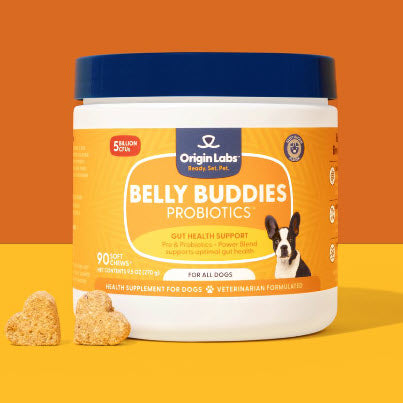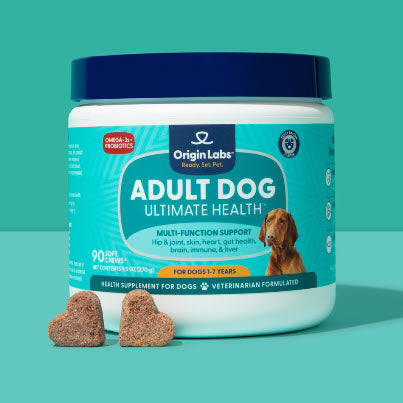Introduction
Understanding the dietary needs of our canine companions is crucial for their health and well-being. Dogs require a balanced diet rich in proteins, fats, carbohydrates, vitamins, and minerals to thrive. Pet owners often wonder about the safety of various foods for their pets, including if dogs can eat black eyed peas.
In this article, we explore the question: Can dogs eat black eyed peas? We will delve into whether it is safe for dogs to consume these legumes and discuss the potential benefits and risks associated with feeding them to your furry friend.
Knowing what foods are appropriate for dogs helps ensure their overall well-being. This knowledge can prevent health issues and promote longevity.
Now let's take a closer look at the general nutritional needs of dogs and how black eyed peas fit into their diet.
The Nutritional Needs of Dogs
Proper nutrition is essential for keeping your dog healthy and happy. A well-balanced diet provides all the necessary nutrients for strong muscles, healthy bones, and a strong immune system. Dogs require a combination of proteins, fats, carbohydrates, vitamins, and minerals to thrive.
Key Nutritional Components:
- Proteins: Vital for muscle development and repair.
- Fats: Provide energy and support skin and coat health.
- Carbohydrates: Supply necessary energy for daily activities.
- Vitamins and Minerals: Essential for various bodily functions including vision, bone health, and immune response.
Why Consulting with a Veterinarian is Important
It's always a good idea to consult with a veterinarian before making any changes to your dog's diet. They can provide expert guidance based on your dog's specific health needs and dietary requirements. This is especially crucial when introducing new foods like black-eyed peas or when considering supplements.
The Role of Commercial Dog Food
Many dogs can benefit from high-quality commercial dog food that is specifically formulated to meet their nutritional needs. These products undergo extensive testing to ensure they provide the right balance of nutrients. However, it's still important to carefully read the ingredients list and choose reputable brands.
Introducing New Foods Safely
While commercial dog food is a convenient option, you may also want to incorporate fresh foods into your dog's diet. When doing so, it's important to follow these guidelines:
- Start Slowly: Introduce new foods gradually to allow your dog's digestive system to adjust.
- Monitor for Reactions: Keep an eye out for any signs of allergies or sensitivities such as vomiting, diarrhea, or itching.
- Avoid Harmful Foods: Certain human foods like chocolate, onions, grapes, and avocado can be toxic to dogs and should always be avoided.
- Consider Your Dog's Age and Health: Puppies, senior dogs, and those with specific medical conditions may have different dietary requirements. Consult with your veterinarian for personalized advice.
Tailored Nutrition for Puppies
If you have a growing puppy, it's important to provide them with the right support for their development.
Understanding your dog's nutritional needs is key to their well-being. By working closely with a veterinarian, you can make informed decisions about their diet, ensuring they remain happy and healthy throughout their lives.
Can Dogs Safely Eat Black Eyed Peas?
Before adding black eyed peas to your dog's meals, it's important to understand their nutritional value. While these legumes offer various nutrients that can be good for dogs, there are also some things to keep in mind.
Nutritional Content of Black Eyed Peas
Black eyed peas are a rich source of:
- Protein
- Fiber
- Calcium
- Folate
Each of these nutrients plays a different role in a dog's health and well-being.
Protein: Beneficial for Muscle Development and Repair?
Protein is an essential part of every dog's diet as it helps with muscle development and repair. Black eyed peas contain a significant amount of plant-based protein. Although animal proteins are generally more complete, plant-based proteins can still contribute to the overall protein intake.
- Muscle Maintenance: The protein in black eyed peas can support muscle maintenance and growth, especially in active or working dogs.
- Amino Acids: Dogs need specific amino acids that are more commonly found in animal proteins. However, when combined with other protein sources, black eyed peas can help meet these requirements.
Fiber: Supporting Digestive Health
Fiber plays a crucial role in keeping a dog's digestive system healthy. Black eyed peas are high in dietary fiber, which offers several benefits:
- Digestive Regularity: Fiber helps regulate bowel movements, reducing the risk of constipation.
- Gut Health: A diet rich in fiber supports the growth of beneficial gut bacteria, promoting overall digestive health.
- Satiety: Foods that are high in fiber can help dogs feel fuller for longer periods, which may be helpful for weight management.
Other Nutrients: Calcium and Folate
In addition to protein and fiber, black eyed peas are also packed with other important nutrients like calcium and folate.
Calcium
Calcium is crucial for maintaining strong bones and teeth. It also plays a role in nerve function and muscle contractions.
- Bone Health: Having enough calcium is important to prevent bone disorders such as osteoporosis.
- Nerve Function: Calcium helps in the transmission of nerve signals, making sure that the nervous system works properly.
Folate
Folate (Vitamin B9) is important for cell division and DNA synthesis. It contributes to overall canine wellness by supporting various bodily functions.
- Cell Division: Folate is vital for the production of red blood cells, which carry oxygen throughout the body.
- DNA Synthesis: This nutrient is essential for DNA replication and repair, which are important during growth and tissue regeneration.
Considerations Before Introducing Black Eyed Peas
While black eyed peas offer numerous nutritional benefits, there are certain factors to consider before allowing your dog to eat black eyed peas:
- Moderation: Introduce black eyed peas gradually to avoid digestive upset.
- Balance: Make sure they complement other parts of your dog's diet instead of being the main source of nutrients.
- Allergies: Some dogs may be allergic to legumes like black eyed peas, so keep an eye out for any negative reactions.
Black eyed peas can be included in your dog's meals as long as you do it in a balanced way. It's always a good idea to talk to your vet before making any big changes to your dog's diet. They can give you personalized advice based on your dog's specific needs and help ensure that they're getting all the necessary nutrients without any potential risks from new foods.
Potential Benefits and Risks of Feeding Black Eyed Peas to Dogs
Potential Benefits
Black eyed peas have anti-inflammatory properties that can benefit dogs with certain health conditions like arthritis or inflammatory bowel disease. The phytonutrients and antioxidants in black eyed peas help reduce inflammation, which may provide relief for dogs with chronic pain or inflammatory issues.
Specific benefits include:
- Arthritis Relief: Dogs with arthritis may experience reduced joint pain and improved mobility due to the anti-inflammatory effects of black eyed peas.
- Digestive Health: Foods with anti-inflammatory properties like black eyed peas can potentially improve digestion and overall gut health in dogs with inflammatory bowel disease.
Potential Risks
It's important to be aware of the potential risks associated with feeding black eyed peas to your dog:
Risks include:
- Constipation: Excessive consumption of black eyed peas can lead to constipation in dogs due to their high fiber content.
- Allergies: Dogs can develop allergies to various foods, including legumes like black eyed peas.
To mitigate these risks:
- Introduce black eyed peas gradually into your dog's diet.
- Ensure they have plenty of water to prevent constipation.
- Monitor your dog closely for any signs of adverse reactions.
- If you notice any symptoms of allergies after introducing black eyed peas, discontinue feeding them immediately and consult your veterinarian.
Balancing Benefits and Risks
When deciding whether to add black eyed peas to your dog's diet, it's essential to consider both the potential benefits and risks:
- Moderation: Feed black eyed peas in moderation to avoid overloading your dog’s digestive system.
- Observation: Monitor your dog closely for any signs of adverse reactions.
- Professional Guidance: Always seek advice from a veterinarian before making significant changes to your pet’s diet.
By balancing the nutritional advantages with careful observation and seeking professional advice, you can ensure the safety and effectiveness of introducing new foods to your dog's diet.
How to Add Black Eyed Peas to Your Dog's Diet
Adding black eyed peas to your dog's diet can be a healthy choice, as long as you do it right. Here are some simple ways to make sure your furry friend benefits from this legume:
1. Treats in Moderation
- Use black eyed peas as an occasional treat rather than a regular part of their meals. This will help prevent any potential tummy troubles.
- Start with small portions to see how well your dog handles them. Mixing a tablespoon or two with their usual food is a good way to start.
2. Mixing with Other Foods
- Combine black eyed peas with other dog-friendly ingredients to create well-rounded meals, such as:
- Mixing them with cooked lean meats like chicken or turkey.
- Adding some steamed vegetables like carrots or green beans for extra fiber and vitamins.
- You can also find homemade dog food recipes that include black eyed peas. Just make sure the recipe is balanced and meets all of your dog's nutritional needs.
3. Preparing the Peas
- Always serve black eyed peas cooked and plain, without any seasoning, salt, or additives that could be harmful to dogs.
- To make them easier for your dog to digest, consider mashing or pureeing the peas before mixing them into their food.
4. Watching for Reactions
- After introducing black eyed peas to your dog's diet, keep an eye out for any signs of digestive issues or allergies.
- If you notice anything concerning, it's best to consult with your vet right away. They can provide guidance based on your dog's specific needs and health conditions.
By following these tips, you can safely incorporate black eyed peas into your dog's diet and give them a tasty yet nutritious treat.
Recipes: Tasty Ways to Serve Black Eyed Peas for Dogs
1. Black Eyed Pea and Chicken Delight
Ingredients:
- 1 cup cooked black-eyed peas
- 1 cup cooked, shredded chicken
- 1/2 cup diced carrots
- 1/2 cup diced sweet potatoes
- 1 tablespoon olive oil
Instructions:
- Combine the cooked black-eyed peas, shredded chicken, carrots, and sweet potatoes in a large bowl.
- Drizzle with olive oil and mix well.
- Serve as a meal topper or a standalone treat.
2. Black Eyed Pea Dog Biscuits
Ingredients:
- 2 cups whole wheat flour
- 1 cup mashed, cooked black-eyed peas
- 1/4 cup peanut butter (make sure it does not contain xylitol)
- 1 egg
- 1/4 cup water
Instructions:
- Preheat your oven to 350°F (175°C).
- In a mixing bowl, combine the flour, mashed black-eyed peas, peanut butter, and egg.
- Gradually add water until the dough reaches a workable consistency.
- Roll out the dough on a floured surface and cut into desired shapes using cookie cutters.
- Place biscuits on a baking sheet lined with parchment paper.
- Bake for 20 minutes or until golden brown.
- Allow to cool completely before serving.
3. Veggie and Black Eyed Pea Stew
Ingredients:
- 1 cup cooked black-eyed peas
- 1/2 cup chopped spinach
- 1/2 cup chopped zucchini
- 1/2 cup chopped carrots
- 3 cups low-sodium chicken broth
Instructions:
- In a large pot, combine the black-eyed peas, spinach, zucchini, and carrots.
- Pour in the chicken broth and bring to a boil.
- Reduce heat and let simmer for about 20 minutes or until vegetables are tender.
- Allow to cool slightly before serving it to your dog.
4. Black Eyed Pea and Pumpkin Mash
Ingredients:
- 1 cup cooked black-eyed peas
- 1/2 cup canned pumpkin (not spiced)
- 2 tablespoons plain Greek yogurt
Instructions:
- In a medium bowl, mash together the cooked black-eyed peas and canned pumpkin until well combined.
- Stir in the Greek yogurt until fully integrated.
- Serve as an enriching side dish alongside your dog’s main meal.
These recipes provide delightful ways to incorporate black-eyed peas into your dog's diet while ensuring they receive wholesome nutrition without compromising their health.
Conclusion
Black eyed peas can be a safe and nutritious addition to your dog's diet when fed in moderation and as part of a balanced meal plan. They offer various health benefits for dogs, such as providing essential nutrients like protein, fiber, calcium, and folate.
Key Points to Remember:
- Moderation is Key: Always feed black eyed peas in moderate amounts to avoid potential digestive issues.
- Monitor Your Dog's Response: Observe your dog’s reaction when introducing black eyed peas into their diet. Look out for any signs of allergies or digestive discomfort.
- Consult with a Veterinarian: Before making any significant changes to your dog's diet, including adding black eyed peas, consult with a vet for personalized advice.
Understanding the dietary needs of dogs is crucial for being responsible pet owners. Ensuring they receive appropriate nutrition helps support their overall health and well-being. By being mindful of what foods are safe and beneficial, you can contribute positively to your pet’s longevity and happiness.
Being informed about both the health benefits of black-eyed peas for dogs and the risks of feeding black-eyed peas to dogs empowers you to make better dietary choices for your furry friend.
FAQs (Frequently Asked Questions)
Can dogs safely eat black eyed peas?
In this article, we will be discussing whether it is safe for dogs to consume black eyed peas and the potential benefits or risks associated with feeding them to dogs.
What is the role of proper nutrition in supporting a dog's health and longevity?
Proper nutrition plays a crucial role in supporting a dog's health and longevity. It is essential to understand what foods are appropriate for dogs to ensure their overall well-being.
What should I consider when introducing new foods like black eyed peas to my dog's diet?
Readers are advised to consult with a veterinarian for professional guidance on their dog's diet, especially when considering introducing new foods like black eyed peas.
What are the potential benefits of feeding black eyed peas to dogs?
Black eyed peas may have potential benefits such as anti-inflammatory properties for dogs with certain health conditions. However, there are also possible risks and considerations to be aware of, including the risk of constipation or digestive issues and the potential for allergies to legumes in some dogs.
How can I incorporate black eyed peas into my dog's diet?
Practical tips on safely incorporating black eyed peas into a balanced diet for dogs include using them as occasional treats or mixing them with other dog-friendly ingredients in homemade meals.
Are there any vet-approved recipes that feature black eyed peas as a key ingredient for dogs?
Yes, there are simple and vet-approved recipes that feature black eyed peas as a key ingredient for dogs. These recipes can provide tasty ways to serve black eyed peas while ensuring they are safe and nutritious for your pet.








